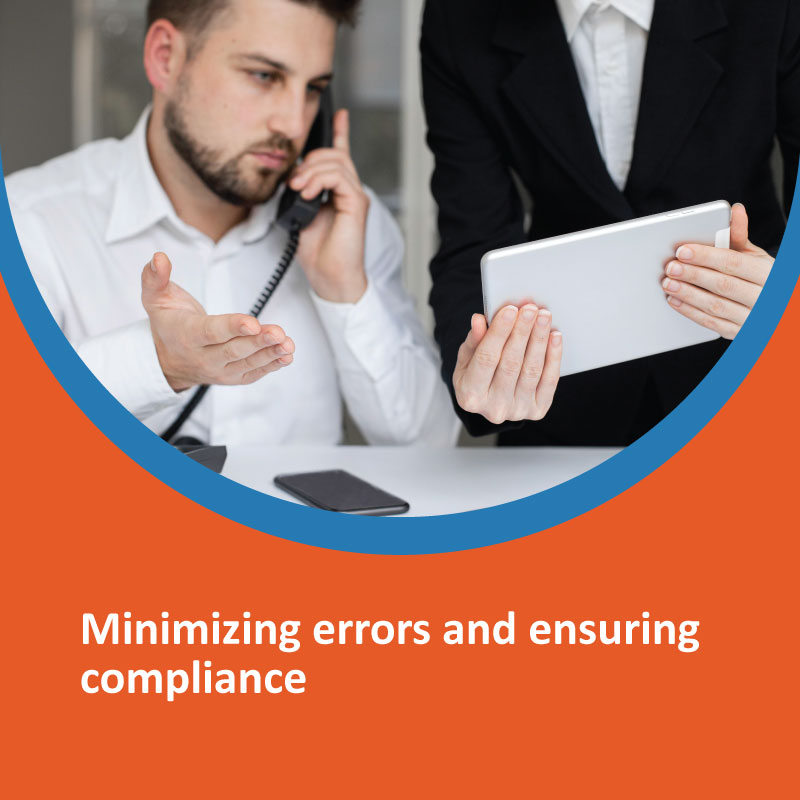Medical billing is complex. Mistakes at this stage can result in late bills, revenue losses, and legal problems. No regulatory policy can be overlooked. Unclear claims can be delayed or rejected. Small mistakes can cause big problems. That’s why it’s essential to be careful and avoid errors. By doing so, healthcare can focus on patient care. Follow Medicare rules to avoid hefty fines. This allows operations to run smoothly.
Minimizing errors in medical billing is crucial. It helps healthcare providers avoid costly mistakes. Medical billing professionals must know the rules and stay updated. Errors often happen due to incorrect coding or data entry. Understanding these errors helps organizations prevent them. By reducing errors, healthcare providers can improve finances and lower risks.
Types of Medical Billing Errors
Coding Errors
Mistakes in coding can reject claims.
Data Entry Mistakes
Typos or wrong information can delay claims.
Double Billing
Sending duplicate claims can cause extra charges.
Incorrect Billing
Charging too much (upcoding) or too little (downcoding) can cause compliance issues.
Unbundling Services:
Billing separately for procedures that should be grouped increases costs unnecessarily.
Impact of Billing Errors
Delayed Payments:
Claim denials slow down reimbursements, affecting cash flow.
Revenue Losses:
Billing errors can cost you money and waste time.
Legal and Compliance Risks:
Breaking healthcare rules can result in hefty fines and legal trouble.
Reputation Damage:
Repeated billing errors can harm patients and insurance providers. This can damage their reputation.
How to Minimize Medical Billing Errors
Proactive medical billing reduces mistakes and saves time. There
1. Provide Ongoing Training for Staff
Train staff regularly to stay updated on medical coding and insurance policies. Encourage certifications like CPC to boost expertise. Host workshops on compliance and fraud prevention.
2. Implement Clear and Standardized Billing Procedures
Could you set up written guidelines for billing and documentation?
Use a checklist to verify claim accuracy before submission.
Please make sure all services are appropriately documented to avoid coding errors.
3. Leverage Medical Billing Software and Automation
Utilise electronic health records (EHR) to minimise manual errors.
Implement AI-driven tools to detect and correct claims before submission.
Use claim scrubbing technology to validate data and reduce rejections.
4. Conduct Regular Audits and Quality Checks
Perform routine internal audits to identify and address billing mistakes.
Schedule external audits to ensure compliance with industry regulations.
Review billing processes to detect and eliminate common errors.
5. Promote Accountability and Accuracy
Assign precise tasks to billing staff.
Encourage open communication between providers and billing teams.
Reward staff for accurate work.
Compliance is key in medical billing.
It keeps things honest and avoids trouble.
Why Compliance Matters
- Regulatory Adherence
- Follows HIPAA and other federal laws.
- Financial Protection
- Reduces risk of fines and claim rejections.
- Patient Trust
- Shows commitment to ethical billing and data security.
- Legal Safeguards
- Protects providers from lawsuits and penalties.
Steps to Ensure Compliance in Medical Billing
1. Stay Updated on Regulations
Keep patient info private and secure.
Update policies and procedures regularly.
Follow industry coding standards set by the AMA and CMS.
2. Create a Compliance Program
Set clear rules for accurate billing and coding.
Assign a compliance officer to enforce rules.
Let staff report wrongdoing without fear.
3. Do Regular Compliance Audits
Check for billing errors and fix them.
Find and fix potential problems.
Make sure everything is working correctly.
Maintain detailed records of audits for transparency.
4. Train Employees on Compliance and Ethical Billing Practices
Provide workshops on fraud prevention and compliance guidelines.
Make compliance training mandatory for all billing personnel.
Ensure staff has access to up-to-date billing regulations and resources.
5. Keep Accurate Records
Store patient treatment and billing records safely.
Use digital tools to organise and secure documents.
Make sure records meet payer requirements.
Conclusion
Reducing errors and ensuring compliance are essential in every field, especially medical billing. They help healthcare providers stay financially stable and follow the rules. To prevent mistakes, train staff, use automation, and do regular audits. Keeping accurate records is also key. Following rules builds trust, improves cash flow, and prevents legal issues. This leads to a smooth revenue cycle and long-term success.
Frequently Asked Questions (FAQs)
1. Why is minimizing errors in medical billing necessary?
Minimizing billing errors is significant because it ensures healthcare providers receive proper service reimbursement.
2. How can healthcare providers maintain compliance in medical billing?
Compliance stays strong with regular audits and staff training. Following HIPAA rules is essential, and keeping accurate records also helps.
3. How does technology help in reducing medical billing errors?
Technology automates billing and checks for errors before submitting claims. It ensures data accuracy and assists with compliance monitoring.
4. What are the risks of non-compliance in medical billing?
Non-compliance can lead to legal penalties, financial losses, damage to reputation, and exclusion from insurance programs like Medicare and Medicaid.
Focusing on accuracy, compliance, and continuous improvement can help medical billing professionals enhance revenue cycles while maintaining industry standards.



